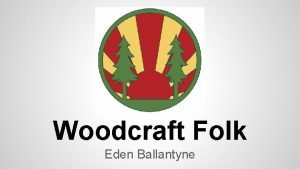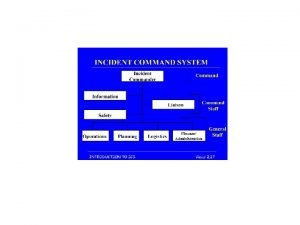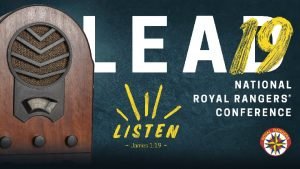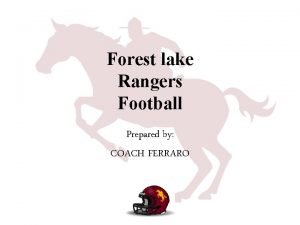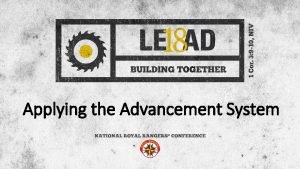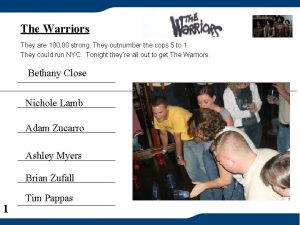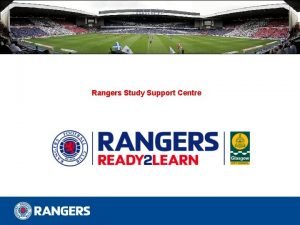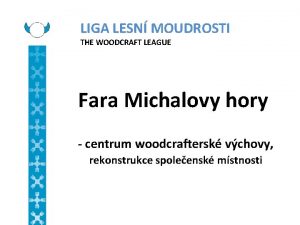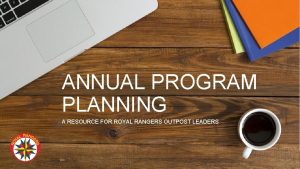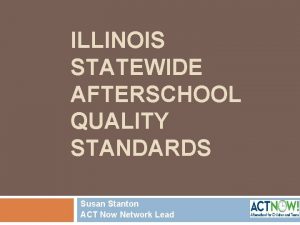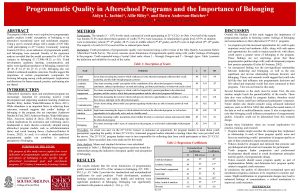Quality Assessment of Woodcraft Rangers AfterSchool Program Challenges














- Slides: 14

Quality Assessment of Woodcraft Rangers’ After-School Program: Challenges and Solutions American Evaluation Association Conference November 10, 2010 Dr. Lisa Garbrecht, EVALCORP

Need for the Study � Participation in high quality after-school programs is associated with positive developmental outcomes for youth � Need to better understand quality of programs ◦ How can quality be measured? ◦ How does program quality relate to student outcomes?

Woodcraft Rangers Nvision After-School Program � At over 60 public schools in Los Angeles County � Elementary, Middle and High Schools � High quality program model includes structured segments with student-driven club activities Goals are to decrease risk factors and increase opportunities for success in school and life � Objectives: � ◦ ◦ Improved school attendance, attitudes toward school Enhanced academic performance and language development Strengthened social and leadership skills Improved physical activity

Purpose of the Study � Explore the quality of implementation of Woodcraft Rangers (WR) program model � Examine whether quality is associated with student outcomes � Inform further development of a way to monitor quality and develop improvement strategies

Methods Secondary Data Analysis � Site Coordinator Survey data collected in 2008/2009 in a Site Implementation Study ◦ Examined if WR model, vision and assumptions about implementation are supported by field experiences ◦ Surveys completed at 57 sites � WR Youth Baseline and Year-End Survey data ◦ Collected between July 2006 -June 2009 � Los Angeles Unified School District and Garvey School District data

Analytic Approaches Two approaches used to identify: Ø Ø Ø 1. Key components of program model, How those components are measured as quality indicators, How quality indicators relate to youth outcomes Factor Analysis Approach ◦ Factor analysis of Site Coordinator Survey ◦ Used to identify categories of quality

Analytic Approaches (Cont. ) 2. Benchmark Approach ◦ WR administrators developed “benchmark” of how high quality sites would respond to Site Coordinator Survey ◦ Benchmark was compared to Site Coordinator responses ◦ Used to examine site scores and their relationships to youth outcomes and transform site scores into categories Multiple regression analyses used to associate the factors and benchmarks with student outcomes � � Performed separately for elementary and middle schools due to their different program models School sociodemographic data and number of days student attended WR were controlled for to “isolate” quality

Findings on Quality Factors � Factor analysis identified 5 areas of site quality: ◦ ◦ � Core elements Cycle plans Value of ad hoc assistance Connections & Educational support (excluded both due to low reliability) Mixed ability of quality factors to predict youth outcomes ◦ In elementary schools, ad hoc assistance was associated with 4 youth outcome areas and cycle plans with 3 outcome areas ◦ In middle schools, core elements was associated with 7 outcome areas and cycle plans with 5 outcome areas

Quality Benchmarks Quality Ratings � Scores were given for each “category” of implementation and for a total score ◦ Categories: cycle plans, time distribution, club activities, student engagement, club contributors, staff value, club selection, student involvement, parent involvement, school collaboration, facilities access, site coordinator qualities, and program staff qualities Findings � In most cases, the quality benchmark categories predicted positive student behavior

Desired Student Outcomes Associated with Quality Categories for Elementary School Programs Desired Student Outcome Significantly Associated Quality Categories Increased CST Math scores Club Activities & Access to Facilities Increased school attendance Club Contributors Increased homework/learning skills Value of Staff, Club Selection & Areas of Excellence Increased pro-social skills Time Distribution & Club Contributors Increased use of academic skills Student Engagement, Club Contributors, Student Involvement & Program Staff Qualities Club Contributors Increased positive attitude toward school Increased positive attitude toward after-school experience Increased interest in after-school activities Value of Staff & Site Coordinator Qualities Decreased problem/risk behaviors Club Contributors, Value of Staff, Club Selection, Access to Facilities & Site Coordinator Qualities Club Activities, Club Contributors, Student Involvement, School Collaboration & Program Staff Qualities

Desired Student Outcomes Associated with Quality Categories for Middle School Programs Desired Student Outcomes Significantly Associated Quality Categories Increased CST ELA scores Increased CST Math scores Club Contributors, Club Selection, Student Involvement, Parent Involvement, School Collaboration, Access to Facilities, Site Coordinator Qualities, Program Staff Qualities & Overall Score Student Involvement, School Collaboration Increased school attendance Access to Facilities, Site Coordinator Qualities & Program Staff Qualities Increased homework/learning Value of Staff, Student Involvement, School Collaboration, Access to Facilities skills & Site Coordinator Qualities Increased use of academic skills Cycle Plans, Time Distribution, Value of Staff, Access to Facilities & Site Coordinator Qualities Increased positive attitudes Cycle Plans, Time Distribution, Value of Staff, Student Involvement, Access to toward school Facilities & Overall Score Increased positive attitude Value of Staff, School Collaboration & Access to Facilities about after-school experience Increased fitness Cycle Plans, Student Involvement, School Collaboration, Access to Facilities & Site Coordinator Qualities Decreased problem/risk Cycle Plans, Value of Staff, Student Involvement, School Collaboration, Access behaviors to Facilities, Site Coordinator Qualities & Overall Score

Usefulness of Methods Factor Analysis Approach � � � Produced quality program areas consistent with the program model Provided credibility to the Site Coordinator Survey as good measure of WR model Limited by sample size in this study Benchmark Approach � � Some categories were better predictors of positive outcomes, but no category was positively associated with a majority of outcomes Attempt to group sites into low, medium and high quality was not as useful as category analyses

Recommendations � � Evaluation of program quality may be key to understanding student outcomes, as some sites experience better outcomes than others Assess specific areas of program implementation to understand positive outcomes, instead of overall quality Incorporate student outcomes as a measure of quality Examine relationships between student outcomes and key program areas instead of linking outcomes to the entire program

For Additional Information Lisa Garbrecht, Ph. D. Cathie Mostovoy lgarbrecht@evalcorp. com cmostovoy@woodcraftrangers. org Research Associate EVALCORP www. evalcorp. com Chief Executive Officer Woodcraft Rangers www. woodcraftrangers. org
 Waaweb
Waaweb Woodcraft cheltenham
Woodcraft cheltenham Woodcraft bench dogs
Woodcraft bench dogs What is woodcraft
What is woodcraft Texas rangers motto
Texas rangers motto Royal rangers tracclub
Royal rangers tracclub Forest lake rangers football
Forest lake rangers football Forest lake rangers football
Forest lake rangers football Zordle
Zordle Aston park rangers
Aston park rangers Micro switch wiring diagram
Micro switch wiring diagram Royal rangers uniforms
Royal rangers uniforms Voyager reading rangers
Voyager reading rangers Power rangers dino charge
Power rangers dino charge The boyle avenue runners
The boyle avenue runners



